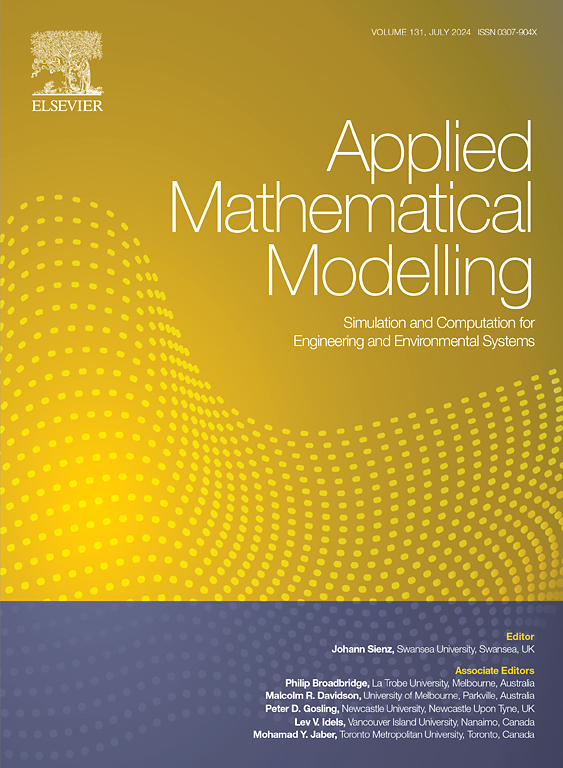Topology optimization of multi-material structures subjected to dynamic loads
IF 4.4
2区 工程技术
Q1 ENGINEERING, MULTIDISCIPLINARY
引用次数: 0
Abstract
Traditional designs for multi-material structures are mostly based on static loads. However, engineering structures are often subjected to dynamic loads. This paper firstly and systematically conducts an in-depth study on the topological design of multi-material structures under dynamic loads. In this method, the definition of design variable adopts the ordered solid isotropic material with penalization (ordered-SIMP) method to normalize the design variable, without introducing any additional variables, the HHT-α method is employed to solve the dynamic optimization problem. To address the dynamic optimization problems with constraints on mass and cost, a convex optimization method based on the concept of sensitivity separation is used to update the design variables, and search for the structural topologies. Finally, this paper provides some numerical examples with respect to time-varying, material parameters, load amplitude, load direction and multiple loads, to discuss in depth the topological and numerical results of these examples.
承受动态载荷的多材料结构的拓扑优化
传统的多材料结构设计大多基于静载荷。然而,工程结构经常会受到动态载荷的影响。本文首次系统深入地研究了动态载荷下多材料结构的拓扑设计。在该方法中,设计变量的定义采用了有序固体各向同性材料加惩罚(ordered-SIMP)方法对设计变量进行归一化,在不引入任何附加变量的情况下,采用 HHT-α 方法求解动态优化问题。为了解决对质量和成本有约束的动态优化问题,采用了基于灵敏度分离概念的凸优化方法来更新设计变量,并搜索结构拓扑。最后,本文提供了一些关于时变、材料参数、载荷振幅、载荷方向和多重载荷的数值示例,以深入讨论这些示例的拓扑和数值结果。
本文章由计算机程序翻译,如有差异,请以英文原文为准。
求助全文
约1分钟内获得全文
求助全文
来源期刊

Applied Mathematical Modelling
数学-工程:综合
CiteScore
9.80
自引率
8.00%
发文量
508
审稿时长
43 days
期刊介绍:
Applied Mathematical Modelling focuses on research related to the mathematical modelling of engineering and environmental processes, manufacturing, and industrial systems. A significant emerging area of research activity involves multiphysics processes, and contributions in this area are particularly encouraged.
This influential publication covers a wide spectrum of subjects including heat transfer, fluid mechanics, CFD, and transport phenomena; solid mechanics and mechanics of metals; electromagnets and MHD; reliability modelling and system optimization; finite volume, finite element, and boundary element procedures; modelling of inventory, industrial, manufacturing and logistics systems for viable decision making; civil engineering systems and structures; mineral and energy resources; relevant software engineering issues associated with CAD and CAE; and materials and metallurgical engineering.
Applied Mathematical Modelling is primarily interested in papers developing increased insights into real-world problems through novel mathematical modelling, novel applications or a combination of these. Papers employing existing numerical techniques must demonstrate sufficient novelty in the solution of practical problems. Papers on fuzzy logic in decision-making or purely financial mathematics are normally not considered. Research on fractional differential equations, bifurcation, and numerical methods needs to include practical examples. Population dynamics must solve realistic scenarios. Papers in the area of logistics and business modelling should demonstrate meaningful managerial insight. Submissions with no real-world application will not be considered.
 求助内容:
求助内容: 应助结果提醒方式:
应助结果提醒方式:


